At-a-glance: New psychoactive substances in Canada - 2022
On this page
- Drug Analysis Service
- Summary
- Aim
- New psychoactive substance - definition
- Data limitations
- Data Analysis
- New psychoactive substances in Canada in 2022
- First identifications
- Conclusion
- References
- Suggested citation
Drug Analysis Service
Health Canada's Drug Analysis Service (DAS) operates laboratories across Canada that analyze suspected illicit drugs seized by Canadian law enforcement agencies and samples submitted by public health partners. DAS data is solely based on samples submitted to our laboratories and as such, samples analyzed by DAS may not be completely representative of drug seizure in Canada, including substances circulating on the market. DAS data should therefore be used with caution when determining trends or drawing conclusions about the type and nature of substances circulating in the illicit market. The data below represent the number of times a substance was identified in submitted samples. A single sample may contain more than one substance. Categorization of substances is based on the Controlled Drugs and Substances Act (CDSA).
Summary
- The Drug Analysis Service identified 29 new psychoactive substances (NPS) in 2022.
- In total, there were 8 hallucinogens, 7 sedative/hypnotics, 5 stimulants, 4 cannabinoids, 2 dissociatives, 2 opioids and 1 other substance.
- 14 NPS were identified in samples submitted by law enforcement agencies from Ontario, 8 from British Columbia, 3 from Alberta, 3 from Quebec and 1 from Saskatchewan. No NPS were initially identified in the other provinces and territories.
- In 2022, the benzodiazepine Desalkylgidazepam emerged as the most commonly identified NPS.
Aim
The aim of this report is to describe NPS that emerged in Canada in 2022 based on samples submitted to the Drug Analysis Service (DAS) by law enforcement agencies and public health partners.
New psychoactive substance - definition
For the purpose of this report, a new psychoactive substance (NPS) is defined as a substance that has the potential to induce psychoactive effects and that has been identified in Canada for the first time in sample submitted to DAS for analysis by law enforcement agencies and public health partners. These substances may be dangerous compounds. It is important to note that these substances may not be regulated or controlled in Canada and comprehensive information regarding their toxicity may not always be readily accessible, thereby posing potential risks to the Canadian population and more specifically people who use drugs.
Data limitations
This report is based on data made available by the Drug Analysis Service (DAS), which analyses suspected illicit drugs seized by Canadian law enforcement agencies and samples submitted by public health partners. Some limitations govern the present data. First, law enforcement agencies submit samples for laboratory analysis based on investigation needs and orientations. Thus, analyzed samples may not be completely representative of substances circulating on the market as a number of factors may influence substances submitted by Canadian law enforcement agencies. Additionally, DAS' mandate is to report substances that are controlled under the Controlled Drugs and Substances Act. As such, it is possible that not all noncontrolled substance were reported.
Data Analysis
Results of analyzed samples submitted by Canadian law enforcement agencies and public health partners are reported in a centralized database called the Laboratory Information Management System (LIMS). The presented data were retrieved from the LIMS and covers the period between January 1, 2022 and December 31, 2022, inclusively. NPS identifications are defined as the identification of a substance in a unique sample.
The analysis of presented data was performed in R4.0.2. Data wrangling and visualization was performed using the tidyverse package Footnote 1.
New psychoactive substances in Canada in 2022
Between January 1st, 2022 and December 31st, 2022, the Drug Analysis Service identified 29 new psychoactive substances (NPS) in samples submitted by Canadian law enforcement agencies, including 4 cannabinoids, 2 dissociatives, 2 opioids, 8 hallucinogens, 7 sedatives/hypnotics and 5 stimulants (Table 1).
| Pharmacological Class | Chemical Class | Count (n) | Percent (%) |
|---|---|---|---|
| Cannabinoid | Cannabimimetics Class | 4 | 13.8 |
| Dissociative | Ketamine Class | 2 | 6.9 |
| Hallucinogen | Lysergic Acid (LSD) Class | 2 | 6.9 |
| Phenethylamines (Main) Class | 2 | 6.9 | |
| Tryptamine Class | 4 | 13.8 | |
| Total | 8 | 27.6 | |
| Opioid | Opioid Class (Non-Fentanyl, Non-Opiates) | 2 | 6.9 |
| Sedative/Hypnotic | Benzodiazepine (BZD) Class | 4 | 13.8 |
| Quinazolinone (Quaalude) Class | 2 | 6.9 | |
| Cutting Agent | 1 | 3.4 | |
| Total | 7 | 24.1 | |
| Stimulant | Amphetamine / Methamphetamine (Sub) Class | 1 | 3.4 |
| Cathinone (Sub) Class | 4 | 13.8 | |
| Total | 5 | 17.2 | |
| Other Substances | Precursor / Key Intermediate / Reagent | 1 | 3.4 |
| Grand Total | - | 29 | 100.0 |
Of the 29 NPS, 19 of them are controlled under the Controlled Drugs and Substances Act (CDSA) and one (Medetomidine) is regulated under the Food and Drugs Act and Regulations and is currently approved in Canada for veterinary use only (Table 2).
| Pharmacological class, chemical class | Substance | Synonym(s) | Controlled status | Additional information | Structure |
|---|---|---|---|---|---|
| Cannabinoid, Cannabimimetics Class | 4-fluoro-MDMB-BICA | 4-fluoro MDMB-BUTICA | CDSA: Schedule II, Item 2 | Synthetic cannabinoids exhibit effects that are similar to delta-9-tetrahydrocannabinol (THC), the active component of cannabis, but they have the potential to induce more potent effects than THC.Footnote 2 Synthetic cannabinoids have been associated with adverse effects, including psychosis, hallucinations, and even fatalities Footnote 3 Footnote 4 |
 |
| ADB-BUTINACA | - | CDSA: Schedule II, Item 2 |  |
||
| ADB-FUBIATA | AD-18; FUB-ACADB | CDSA: Schedule II, Item 2 | 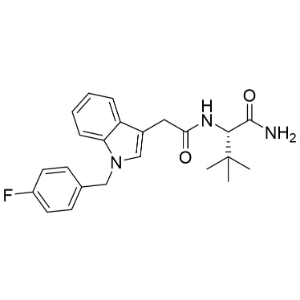 |
||
| BZO-4en-POXIZID | 4en-pentyl MDA-19 | CDSA: Schedule II, Item 2 | This synthetic cannabinoid was initially developed in 2008 with the intention of targeting specific (non-psychoactive) therapeutic effects in the pursuit of new treatments for neuropathic pain. Footnote 5 | 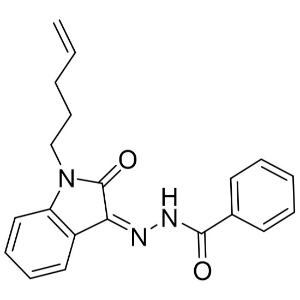 |
|
| Dissociative, Ketamine Class |
FluorodeschloroketamineFootnote ŧ | 2-FDCK; 3-FDCK; 4-FDCK | CDSA: Schedule I, Item 14, Line 1 | There is limited information available in the literature regarding these Ketamine analogs. It is anticipated that these substances will exhibit dissociative effects similar to Ketamine. Footnote 6 Footnote 7 | 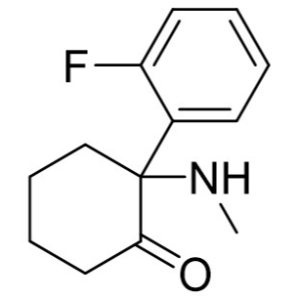 |
| FluorexetamineFootnote ß | 3-fluoro-2-OXO-PCE; FXE; 2-fluoro-2-OXO-PCE | CDSA: Schedule I, Item 14, Line 1 |  |
||
| Hallucinogen, Lysergic Acid (LSD) Class |
1-Acetyl LSD | ALD52 | Not controlled | These substances are analogues of Lysergic acid diethylamide (LSD) that generates psychedelic effects, resembling those of LSD. Footnote 8 Footnote 9 |  |
| 2,4-Dimethylazetidide LSD | LSZ | Not controlled | 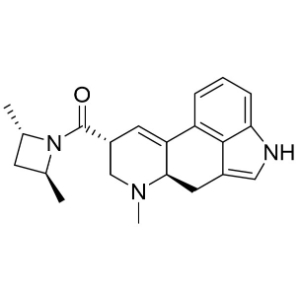 |
||
| Hallucinogen, Phenethylamines (Main) Class |
β-hydroxy 2C-B | BOHB; BOH-2C-B | CDSA: Schedule III, Item 35 | There is little information available in the literature regarding this substance. | 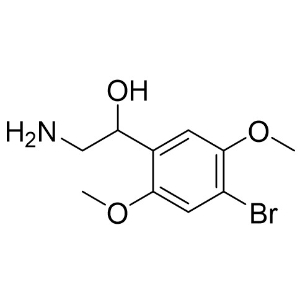 |
| Allylescaline | - | Not controlled | This substance is a derivative of the phenethylamine Mescaline. There is little information available in the literature regarding this substance. Footnote 10 |  |
|
| Hallucinogen, Tryptamine Class |
4-Acetoxy-N-Ethyl-N-Propyltryptamine | 4-Acetoxy EPT | Not controlled | Data suggest that this tryptamine may possibly have similar effects as psilocybin. Footnote 11 | 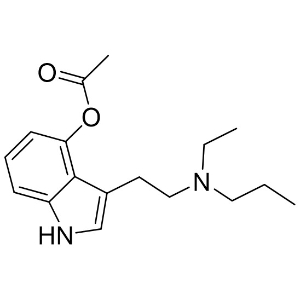 |
| 5-methoxy DPT | 5-methoxy-N,N-Dipropyltryptamine; 5-MeO-DPT | Not controlled | There is little information available in the literature regarding these tryptamines. |  |
|
| Bromo-N,N- DimethyltryptamineFootnote ¥ |
4-bromo-DMT; 5-bromo-DMT; 6-bromo-DMT; 7-bromo-DMT | Not controlled |  |
||
| Chloro-N,N- DimethyltryptamineFootnote ¥ |
4-chloro-DMT; 5-chloro-DMT; 6-chloro-DMT; 7-chloro-DMT | Not controlled |  |
||
| Opioid, Opioid Class (Non-Fentanyl, Non-Opiates) |
Dipyanone | N-pyrrolidino Methadone | CDSA: Schedule I, Item 5 | This opioid is reported to be slightly less potent than methadone. Footnote 12 | 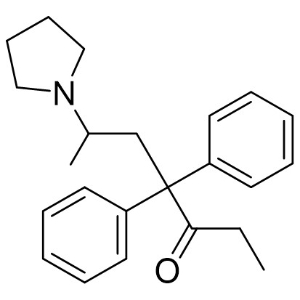 |
| Butonitazene | Butoxynitazene | CDSA: Schedule I, Item 13 | This novel opioid is reported to exhibit analgesic effects in mice, in a manner consistent with other benzimidazoles. Footnote 13 | 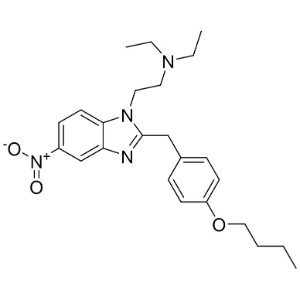 |
|
| Sedative/Hypnotic, Benzodiazepine (BZD) Class |
Desalkylgidazepam | Bromonordiazepam | CDSA: Schedule IV, Item 18 | The active metabolite of Gidazepam, an available prescription-only benzodiazepine medication marketed in Russia and Ukraine. It is utilized as a treatment for anxiety, alcohol withdrawal, and migraines. Footnote 14 |  |
| Fluclotizolam | - | CDSA: Schedule IV, Item 18 | Data suggest that this benzodiazepine may be 2-3 times more potent than Etizolam. Footnote 15 | 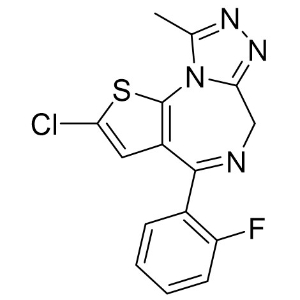 |
|
| Flunitrazolam | FNTZ; Flunazolam | CDSA: Schedule IV, Item 18 | The chemical structure suggests that Flunitrazolam is a potent benzodiazepine. Footnote 15 | 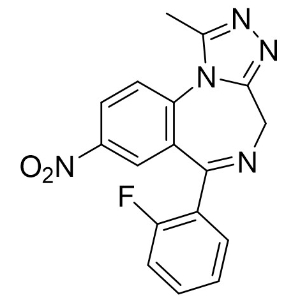 |
|
| Pyrazolam | - | CDSA: Schedule IV, Item 18 | This benzodiazepine is structurally similar to Alprazolam. It has been identified in Europe in 2012. Footnote 15 |  |
|
| Sedative/Hypnotic, Quinazolinone (Quaalude) Class |
Etaqualone | Aolan; Athinazone; Ethinazone | Not controlled | This quinazolinone is an analogue of Methaqualone and was marketed in Europe for the treatment of insomnia. Footnote 16 |  |
| Methylmethaqualone | MMQ; 4-methyl Methaqualone | Not controlled | This quinazolinone is an analogue of Methaqualone. It has been associated with acute neurotoxicity. Footnote 17 |  |
|
| Sedative/Hypnotic, Cutting Agent |
Medetomidine | Domitor; Selektope | Canada's Food and Drugs Act and Regulations (Veterinary use only) | This substance is an analgesic/anesthetic belonging to the same class of medication as Xylazine. It is commonly employed in veterinary medicine as an adjuvant analgesic/anesthetic during surgeries for dogs. Footnote 18 |  |
| Stimulant, Amphetamine / Methamphetamine (Sub) Class |
FluoroethamphetamineFootnote ß | 2-fluoroethamphetamine; 3-fluoroethamphetamine; 4-fluoroethamphetamine | CDSA: Schedule I, Item 19 | This amphetamine is structurally similar to fluoroamphetamine and fluoromethamphetamine. Footnote 19 |  |
| Stimulant, Cathinone (Sub) Class |
N-cyclohexylmethylone | Cyputylone | CDSA: Schedule I, Item 19 | This cathinone is structurally similar to Methylone and Diethylone. Little information is available. Footnote 20 |  |
| N-Ethylpentedrone | α-Ethylaminopentiophenone | CDSA: Schedule I, Item 19 | These cathinones have been identified in several toxicology and death cases. Footnote 21 Footnote 22 Footnote 23 | 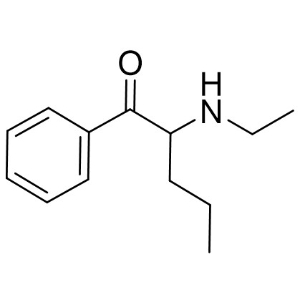 |
|
| N,N-Dimethylpentylone | Dipentylone; bk-DMBDP | CDSA: Schedule I, Item 19 | 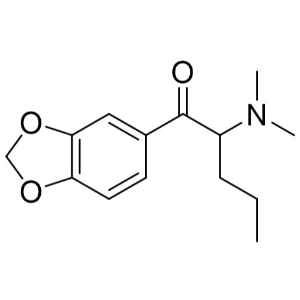 |
||
| N-Propylbutylone | 3,4-Methylenedioxy-α-propylaminobutiophenone; bk-PBDB | CDSA: Schedule I, Item 19 |  |
||
| Other substance, Precursor / Key Intermediate / Reagent |
Methyl 3-oxo-2-(3,4-methylenedioxyphenyl) butanoate |
MD-MAPA; 3,4-methylenedioxy-MAPA | CDSA: Schedule VI, Item 9 | This substance serves as a precursor in the production of MDMA Footnote 24 | 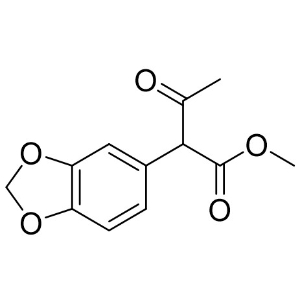 |
|
|||||
First identifications
New psychoactive substances were identified throughout 2022, reaching a peak in August (Figure 1).

Figure 1 - Text description
| Month | Pharmacological Class | Total | ||||||
|---|---|---|---|---|---|---|---|---|
| Cannabinoid | Dissociative | Hallucinogen | Opioid | Sedative/Hypnotic | Stimulant | Not applicable Footnote § | ||
| January | - | - | - | - | - | - | - | - |
| February | - | - | - | 1 | 1 | - | - | 2 |
| March | - | - | - | - | 1 | - | - | 1 |
| April | - | - | - | 1 | 2 | - | - | 3 |
| May | - | 1 | - | - | 1 | - | - | 2 |
| June | 1 | - | - | - | - | 2 | - | 3 |
| July | 1 | - | - | - | - | - | - | 1 |
| August | - | - | 6 | - | - | 2 | - | 8 |
| September | - | - | - | - | 2 | - | - | 2 |
| October | 1 | - | - | - | - | - | 1 | 2 |
| November | 1 | 1 | 1 | - | - | - | - | 3 |
| December | - | - | 1 | - | - | 1 | - | 2 |
|
||||||||
Half (14) of the 29 NPS were first identified in samples submitted by law enforcement agencies in Ontario, and a quarter (8) of them were identified in samples submitted by law enforcement agencies in British Columbia (Figure 2).
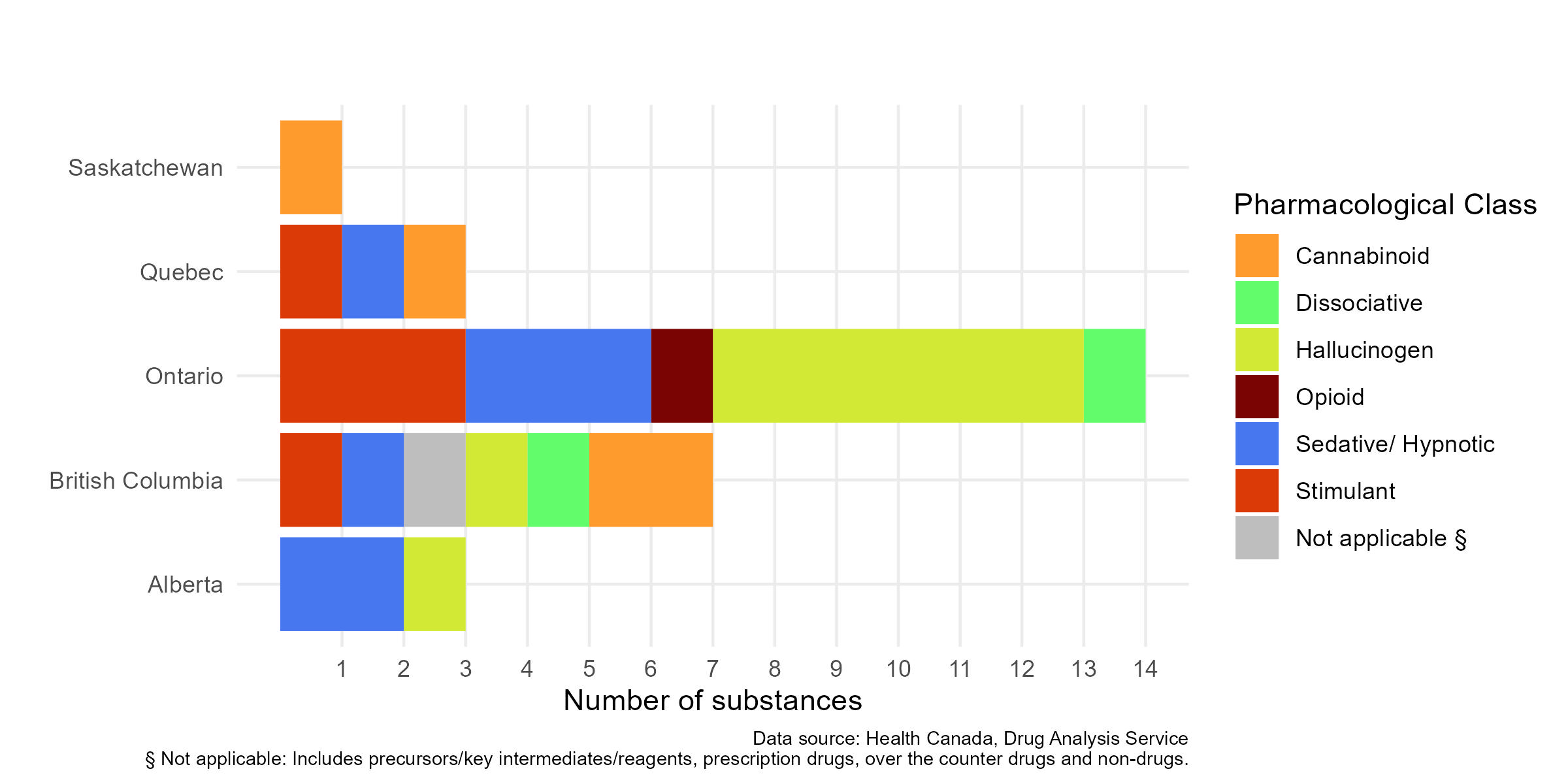
Figure 2 - Text description
| Province/Territory | Pharmacological Class | Total | ||||||
|---|---|---|---|---|---|---|---|---|
| Cannabinoid | Dissociative | Hallucinogen | Opioid | Sedative/Hypnotic | Stimulant | Not applicableFootnote § | ||
| Saskatchewan | 1 | - | - | - | - | - | - | 1 |
| Ontario | - | 1 | 6 | 1 | 3 | 3 | - | 14 |
| Quebec | 1 | - | - | - | 1 | 1 | - | 3 |
| British Columbia | 2 | 1 | 1 | 1 | 1 | 1 | 1 | 8 |
| Alberta | - | - | 1 | - | 2 | - | - | 3 |
|
||||||||
Cannabinoids: DAS newly identified 4 synthetic cannabinoids (cannabimimetics) in 2022, all of which were either in powder form or residue. 4-fluoro-MDMB-BICA was found in co-occurrence with another synthetic cannabinoid, ADB-BUTINACA. Other co-occurring substances identified with some of these NPS were opioids (Fentanyl, nitazenes), stimulants (Cocaine, Methamphetamine) and Xylazine.
Dissociatives: DAS newly identified 2 ketamine analogues in 2022, both of which were in crystalline form. Fluorodeschloroketamine was identified both in crystalline form and in powder form. It was also identified in co-occurrence with various substances including stimulants (Cocaine, Methamphetamine, and MDA), opioids (Fentanyl, Carfentanil, and 6-Acetylmorphine), and Ketamine itself.
Hallucinogens: DAS newly identified 4 tryptamines in 2022, all of which were in powder form and without any co-occurring substances.
Opioids: DAS newly identified 2 synthetic opioids in 2022, both of which were in powder form. Dipyanone was found in co-occurrence with substances such as Fentanyl and Etizolam, among others. Butonitazene was found in co-occurrence with other opioids (Metonitazene, Fentanyl and Acetylfentanyl) and sedative/hypnotic substances (Xylazine and Flubromazepam).
Sedatives/hypnotics: DAS newly identified 4 benzodiazepines in 2022. Desalkylgidazepam and Fluclotizolam were repeatedly identified in 2022 in various forms including tablets, powder, blotter paper and crystalline substance. Flunitrazolam and Pyrazolam were each identified once in 2022 in the form of tablets. Desalkylgidazepam was identified in co-occurrence with multiple other substances, including Fentanyl and analogues, other benzodiazepines, nitazenes as well as stimulants (Methamphetamine, Cocaine and MDMA). More information about Desalkylgidazepam can be found in our report "Infosheet: Emergence of Desalkylgidazepam, a novel benzodiazepine in Canada". DAS also newly identified 2 sedatives/hypnotics belonging to the quinazolinone (quaalude) chemical class. These substances, Etaqualone and Methylmethaqualone, were found in powder form and were identified in co-occurrence with Fentanyl, various benzodiazepines, and nitazenes. At last, Medetomidine, a non-controlled veterinary anesthetic/analgesic was identified in co-occurrence with Fentanyl, several benzodiazepines as well as Xylazine.
Stimulants: DAS newly identified 4 cathinones in 2022. N,N-Dimethylpentylone was identified in co-occurrence with Methamphetamine, Fentanyl and Xylazine (Table 3).
| Pharmacological Class | Chemical Class | Substance | First Identification | Description | Co-occurring substances | |
|---|---|---|---|---|---|---|
| Date | City, Province | |||||
| Cannabinoid | Cannabimimetic class | 4-fluoro-MDMB-BICA | October 27, 2022 | Nanaimo, British Columbia | Powder | ADB-BUTINACA |
| ADB-BUTINACA | July 27, 2022 | Regina, Saskatchewan | Powder | Caffeine, ß-keto-Ethylbenzodioxolylbutanamine, Xylazine | ||
| ADB-FUBIATA | June 28, 2022 | Vancouver, British Columbia | Powder | α-Pyrrolidinoisohexanophenone, Caffeine, Cocaine, Diphenhydramine, Etodesnitazene, Fentanyl, Metonitazene | ||
| BZO-4en-POXIZID | November 8, 2022 | Lavaltrie, Quebec | Residue | Caffeine, Fentanyl, Methamphetamine, Xylazine | ||
| Dissociative | Ketamine class | Fluorexetamine | November 22, 2022 | Surrey, British Columbia | Crystalline Substance | - |
| Fluorodeschloroketamine | May 25, 2022 | Port Hope, Ontario | Crystalline substance, Powder | Caffeine, Cocaine, Diphenhydramine, Fentanyl, 3,4-methylenedioxyamphetamine (MDA), Methamphetamine, 6-Acetylmorphine, Carfentanil, Ketamine | ||
| Hallucinogen | Lysergic acid (LSD) class | 1-Acetyl LSD | August 26, 2022 | Hamilton, Ontario | Powder | - |
| 2,4-Dimethylazetidide LSD | August 19, 2022 | Hamilton, Ontario | Blotter papers | - | ||
| Phenethylamines (main) class | Allylescaline | August 26, 2022 | Hamilton, Ontario | Powder | - | |
| β-hydroxy 2C-B | December 13, 2022 | Lethbridge, Alberta | Tablets | - | ||
| Tryptamine class | 4-Acetoxy-N-Ethyl-N-Propyltryptamine | August 12, 2022 | Hamilton, Ontario | Powder | - | |
| 5-methoxy DPT | November 14, 2022 | Nanaimo, British Columbia | Powder | - | ||
| Bromo-N,N- Dimethyltryptamine |
August 26, 2022 | Hamilton, Ontario | Powder | - | ||
| Chloro-N,N- Dimethyltryptamine |
August 19, 2022 | Hamilton, Ontario | Powder | - | ||
| Opioid | Opioid class (non-fentanyl, non-opiates) | Dipyanone | February 22, 2022 | Brantford, Ontario | Powder | Caffeine, Diphenhydramine, Etizolam, Fentanyl, Lidocaine, Phenacetin |
| Butonitazene | April 27, 2022 | Surrey, British Columbia | Powder | Caffeine, Dimethylsulphone, Fentanyl, Flubromazepam, Xylazine, Acetylfentanyl, Metonitazene | ||
| Sedative/Hypnotic | Benzodiazepine (BZD) class | Desalkylgidazepam | April 27, 2022 | Drayton Valley, Alberta | Powder, Crystalline substance, Residue, Rock-like solid (crack), Syringe | Fentanyl, Methamphetamine, Caffeine, Phenacetin, para-Fluorofentanyl, Carfentanil, Dimethylsulphone, Flualprazolam, Cocaine, Lidocaine, Flubromazepam, Acetylfentanyl, Bromazolam, Diacetylmorphine, Xylazine, Etizolam, N-methyl-3,4-methylenedioxyamphetamine (MDMA), Deschloroetizolam, Diphenhydramine, Etodesnitazene, Metonitazene, Trazodone |
| Fluclotizolam | April 21, 2022 | Dryden, Ontario | Tablets, Blotter papers, Powder | - | ||
| Flunitrazolam | September 13, 2022 | Longueuil, Quebec | Tablets | - | ||
| Pyrazolam | September 29, 2022 | Lethbridge, Alberta | Tablets | - | ||
| Quinazolinone (Quaalude) Class | Etaqualone | March 23, 2022 | Barrie, Ontario | Powder | Bromazolam, Caffeine, Diphenhydramine, Etodesnitazene, Fentanyl, Metonitazene, Scopolamine | |
| Methylmethaqualone | February 25, 2022 | Barrie, Ontario | Powder | Caffeine, Diphenhydramine, Etodesnitazene, Fentanyl, Metonitazene, Norfludiazepam, Bromazolam, Furanyl UF-17, Xylazine, Dimethylsulphone | ||
| Cutting Agent | Medetomidine | May 11, 2022 | Brantford, Ontario | Powder | Caffeine, Diphenhydramine, Fentanyl, Flubromazepam, Phenacetin, Xylazine, Etodesnitazene, Bromazolam, Etizolam, Norfludiazepam | |
| Stimulant | Amphetamine / methamphetamine (sub) class | Fluoroethamphetamine | June 9, 2022 | Port Hope, Ontario | Powder | - |
| Cathinone (sub) class | N-cyclohexylmethylone | December 22, 2022 | Surrey, British Columbia | Crystalline Substance | - | |
| N-Ethylpentedrone | August 24, 2022 | Port Hope, Ontario | Powder | - | ||
| N,N-Dimethylpentylone | June 1, 2022 | Barrie, Ontario | Powder, Tablets | α-Pyrrolidinoisohexanophenone, Caffeine, Methamphetamine, Fentanyl, Xylazine, Dimethylsulphone | ||
| N-Propylbutylone | August 18, 2022 | Boucherville, Quebec | Powder | - | ||
| Other Substances | Precursor / key intermediate / reagent | Methyl 3-oxo-2-(3,4-methylenedioxyphenyl) butanoate |
October 11, 2022 | West Vancouver, British Columbia | Powder | - |
Conclusion
This At-A-Glance report describes 29 new psychoactive substances first identified by the Drug Analysis Service in 2022 in samples submitted by Canadian law enforcement agencies and public health partners. NPS identified in Canada in 2022 include 8 hallucinogens (4 tryptamines, 2 phenethylamines and 2 LSD analogs), 7 sedative/hypnotics (4 benzodiazepines, 2 quinazolinones and 1 cutting agent), 5 stimulants (4 cathinones and 1 amphetamine), 4 cannabinoids (synthetic cannabinoids), 2 dissociatives (ketamine analogs), 2 opioids and 1 other substance. Half of the NPS were identified for the first time in samples submitted by law enforcement agencies from Ontario and a quarter from law enforcement agencies in British Columbia. Co-occurring substances with newly identified NPS included Fentanyl and analogues, benzodiazepines, nitazenes and stimulants (Methamphetamine, Cocaine, MDMA and MDA). Continued monitoring of NPS is required to ensure accurate information is available to partners about potentially harmful substances and to identify emerging trends on the Canadian market.
Drug Analysis Service– Health Canada:
- Marie-Line Gilbert
- Michèle Boileau-Falardeau
- Caroline Maurice-Gélinas
- Jean-François Chiasson
- Janike Pitre
- Benoit Archambault
Public Health Agency of Canada:
- Cindy Leung Soo
References
- Footnote 1
-
Wickham H, Averick M, Bryan J, Chang W, McGowan LD, François R, Grolemund G, Hayes A, Henry L, Hester J, Kuhn M, Pedersen TL, Miller E, Bache SM, Müller K, Ooms J, Robinson D, Seidel DP, Spinu V, Takahashi K, Vaughan D, Wilke C, Woo K, Yutani H, "Welcome to the tidyverse," Journal of Open Source Software, vol. 4, no. 43, p. 1686, 2019.
- Footnote 2
-
M. H. Deventer, K. V. Uytfanghe, I. M. J. Vinckier, F. Reniero, C. Guillou and C. P. Stove, "A new cannabinoid receptor 1 selective agonist evading the 2021 "China ban": ADB-FUBIATA," Drug Test Anal., vol. 14, no. 9, pp. 1639-1644, 2022.
- Footnote 3
-
T. Körmöczi, É. Sija, L. Institoris, É. M. Kereszty, I. Ilisz and R. Berkecz, "Analytical Methodologies for the characterization and analysis of the parent compound and phase 1 metabolites of 4F-MDMB-BICA in human microsome, urine and blood samples," Journal of Analytical Toxicology, vol. 46, pp. 135-145, 2022.
- Footnote 4
-
World Health Organization - Expert Committee on Drug Dependence, "Critical review report: ADB-BUTINACA," Geneva, 2022.
- Footnote 5
-
M. H. Deventer, K. V. Uytfanghe, I. M. J. Vinckier, F. Reniero, C. Guillou and C. P. Stove, "Cannabinoid receptor activation potential of the next generation, generic ban evading OXIZID synthetic cannabinoid receptor agonists," Drug Test Anal., vol. 14, no. 9, pp. 1565-1575, 2022.
- Footnote 6
-
M. H. Tang, T. C. Li, C. Lai, Y. Chong, C. Ching and T. W. Mak, "Emergence of new psychoactive substance 2-fluorodeschloroketamine: Toxicology and urinary analysis in a cluster of patients exposed to ketamine and multiple analogues," Forensic Science International, vol. 312, 2020.
- Footnote 7
-
H. H. Maurer and S. D. Brandt, Eds., New Psychoactive Substances, vol. 252, Springer, 2018.
- Footnote 8
-
A. L. Halberstadt, M. Chatha, A. K. Klein, J. D. McCorvy, R. M. Meyer, L. Wagmann, A. Stratford and S. D. Brandt, "Pharmacological and biotransformation studies of 1-acyl-substituted derivatives of D-lysergic acid diethylamide (LSD)," Neuropharmacology, vol. 172, 2020.
- Footnote 9
-
S. D. Brandt, P. V. Kavanagh, F. Westphal, S. P. Elliot, J. Wallach, T. Colestock, S. J. Chapman, A. Stratford, D. E. Nichols and A. L. Halberstadt, "Return of the lysergamides. Part II: Analytical and behavioural characterization of N6-allyl-6-norlysergic acid diethylamide (AL-LAD) and (2'S,4'S)-lysergic acid 2,4-dimethylazetidide (LSZ)," Drug Test Anal., vol. 9, no. 1, pp. 38-50, 2017.
- Footnote 10
-
Cayman Chemical, [Online]. Available: https://www.caymanchem.com/product/9001982/allylescaline-(hydrochloride). [Accessed 16 May 2023].
- Footnote 11
-
A. K. Klein, M. Chatha, L. J. Laskowski, E. I. Anderson, S. D. Brandt, S. J. Chapman and A. L. Halberstadt, "Investigation of the Structure−Activity Relationships of Psilocybin Analogues," ACS Pharmacology & Translational Science, vol. 4, pp. 533-542, 2021.
- Footnote 12
-
Center for Forensic Science Research and Education, 14 March 2022. [Online]. Available: https://www.cfsre.org/images/monographs/Dipyanone_031422_NMSLabs_Report.pdf. [Accessed 16 May 2023].
- Footnote 13
-
M. M. Vandeputte, K. V. Uytfanghe, N. K. Layle, D. M. St. Germaine, D. M. Iula et C. P. Stove, « Synthesis, Chemical Characterization, and μ-Opioid Receptor Activity Assessment of the Emerging Group of "Nitazene" 2-Benzylbenzimidazole Synthetic Opioids, » ASC Chemical Neuroscience, vol. 12, pp. 1241-1251, 2021.
- Footnote 14
-
P. D. Maskell, G. Wilson and K. R. Manchester, "Designer Benzodiazepines Gidazepam and Desalkygidazepam (Bromonordiazepam): What Do We Know?," Journal of Analytical Toxicology, vol. 47, pp. 324-331, 2023.
- Footnote 15
-
European Monitoring Centre for Drugs and Drug Addiction, "New benzodiazepines in Europe – a review," [Online]. Available: https://www.emcdda.europa.eu/publications/rapid-communications/new-benzodiazepines-europe-review_en. [Accessed 16 May 2023].
- Footnote 16
-
National Center for Advancing Translational Sciences, "Inxight Drugs - Etaqualone," [Online]. Available: https://drugs.ncats.io/substance/HFS3HB32J7. [Accessed 16 May 2023].
- Footnote 17
-
A. Ceschi, G. Giardelli, D. M. Müler, S. Elavumkudy, A. F. Manini, C. Rauber-Lüthy and K. E. Hofer, "Acute neurotoxicity associated with recreational use of methylmethaqualone confirmed by liquid chromatography tandem mass spectrometry," Clin Toxicol (Phila), vol. 51, no. 1, pp. 54-57, 2013.
- Footnote 18
-
L. Lamont, "Chapter 11 - α2-Agonists," in Handbook of Veterinary Pain Management, 2009, pp. 210-230.
- Footnote 19
-
Center for Forensic Science Research & Education, "4-Fluoroethamphetamine," 3 January 2019. [Online]. Available: https://www.cfsre.org/nps-discovery/monographs/4-fluoroethamphetamine. [Accessed 16 May 2023].
- Footnote 20
-
Center for Forensic Science and Research, "N-Cyclohexyl Methylone," 9 May 2022. [Online]. Available: https://www.cfsre.org/nps-discovery/monographs/n-cyclohexyl-methylone. [Accessed 16 May 2023].
- Footnote 21
-
E. Pieprzyca, R. Skowronek and P. Czekaj, "Toxicological Analysis of Intoxications with Synthetic Cathinones," Journal of Analytical Toxicology, vol. 46, no. 7, pp. 705-711, 2022.
- Footnote 22
-
S. Walton, M. Fogarty, D. Papsun, M. Lamb, B. Logan and A. Krotulski, "N,N-Dimethylpentylone-an emerging NPS stimulant of concern in the United States," Toxicology Analytique et Clinique, vol. 34, no. 3, pp. S67-S68, 2022.
- Footnote 23
-
Center for Forensic Science Research & Education, "N-Propyl Butylone," 21 July 2022. [Online]. Available: https://www.cfsre.org/nps-discovery/monographs/n-propyl-butylone. [Accessed 16 May 2023].
- Footnote 24
-
K. Niklas, M. Greif, T. Röbler, M. Pütz, T. Frömel and T. P. Knepper, "Stability of selected substances related to the clandestine production of amphetamine-type stimulants in wastewater:Identification of transformation products," Talanta oPEN, vol. 5, p. 100104, 2022.
Suggested citation
Government of Canada. (2023). Health Canada Drug Analysis Service. At-a-glance: New psychoactive substances in Canada - 2022. Longueuil (QC), 2023. Retrieved from https://www.canada.ca/en/health-canada/services/publications/healthy-living/new-psychoactive-substances-canada-2022.html.
For more information, please contact Health Canada’s Drug Analysis Service.
© His Majesty the King in Right of Canada, as represented by the Minister of Health, 2023
Cat.: H139-56/2023E-PDF ׀ ISBN: 978-0-660-68253-2 ׀ Pub.: 230491
